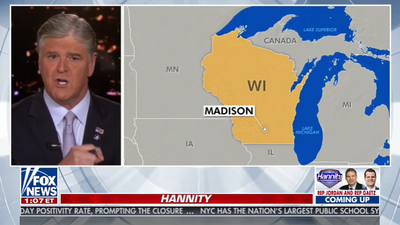

Unpacking The Controversies: Fox News And The Accusations Of Misinformation
Since its inception in 1996, Fox News has been at the center of numerous controversies. This news channel has frequently been labeled as the most-watched in the United States, but its reputation has often been clouded by accusations of misinformation. The question arises: how has Fox News maintained its viewer base despite these controversies? The answer lies in the intersection of media, public perception, and the sometimes blurred lines between news reporting and entertainment.
Fox News has been accused of spreading false information on various occasions. Some of these accusations are valid, while others stem from misunderstandings or misattributions. The media landscape is filled with satire and parody, which can easily be misinterpreted as genuine news. This combination of factors creates a complex environment where truth and fiction often collide, leading to a fascinating examination of media literacy in today's society.
In this article, we will delve into some of the most notable instances where Fox News has been accused of lying. We will explore the stories behind these accusations, the public's reactions, and what they reveal about our consumption of news in the age of information overload. As we dissect these controversies, we will discover that sometimes, the truth is indeed stranger than fiction!
What You Will Learn
- The history of controversies surrounding Fox News since its launch.
- Key instances where Fox News was accused of misinformation and the outcomes of these cases.
- The impact of social media on the perception of news and information accuracy.
- Insights into media literacy and the importance of critical thinking when consuming news.
Did Fox News' Pete Hegseth Say 'Germs Are Not a Real Thing'?
In a memorable moment from "Fox & Friends Sunday" in 2019, Pete Hegseth made a bold claim about hygiene. He stated that he hadn’t washed his hands in a decade because "germs are not real" if they are invisible. This peculiar declaration sparked widespread attention and became a viral sensation, reigniting discussions about health practices and public awareness.
Hegseth's comments were later revisited in 2021, receiving a mix of laughter and disbelief from social media users. While he suggested that his statement was a joke, it highlights how easily statements made in jest can be taken seriously by the public. The incident serves as a reminder of the influence that media personalities can wield and the potential for misunderstanding in a digital age.

Did Fox News Map Mislabel Michigan as Canada?
On November 19, 2020, Fox News host Sean Hannity accidentally labeled Michigan's Upper Peninsula as part of Canada during a segment discussing election recounts. This blunder quickly went viral, prompting reactions from both social media users and local residents who were eager to clarify their geographical identity.
The incident became a humorous topic of discussion, reminding many of the importance of geographical knowledge. The Detroit Free Press and locals from the Upper Peninsula were quick to point out that their region is firmly part of the United States. Fox News rectified the mistake the following day, but not before it provided a light-hearted lesson in U.S. geography.

Was Fox News' John Roberts Caught on Hot Mic Discussing COVID-19 as a Hoax?
On April 20, 2020, a video surfaced of Fox News reporter John Roberts and New York Times photographer Doug Mills joking about the COVID-19 pandemic, referring to it as a "hoax." This "hot mic" moment quickly garnered millions of views online, with many interpreting it as a serious commentary on the virus.
However, Roberts later clarified that the conversation was taken out of context, emphasizing that it was merely gallows humor between colleagues. This incident serves as a stark reminder of how easily humor can be misconstrued in the fast-paced world of social media, and it raises important questions about the responsibilities of journalists in such an environment.

Did Fox News Post Staged Photo of Soldiers During Trump's 2019 Afghanistan Visit?
In November 2019, a purported photo of U.S. soldiers welcoming President Donald Trump in Afghanistan circulated on social media, claiming it was a Fox News broadcast. However, it was later revealed that the image was digitally altered and not from a Fox News report.
This situation underscores the challenges of discerning fact from fiction in the digital age. The authenticity of media images is often taken for granted, making it crucial for viewers to verify sources and context before drawing conclusions.

Did Fox News Use Image of Patti LaBelle During Aretha Franklin Tribute?
After the passing of legendary singer Aretha Franklin, Fox News aired a tribute that mistakenly featured a photo of Patti LaBelle. This graphic error sparked confusion on social media, as viewers quickly noted the mix-up.
Fox News promptly apologized for the mistake, which was intended as a tribute to Franklin's illustrious career. This incident serves as a reminder that even well-meaning gestures can go awry, leading to unintended consequences in the realm of public perception.

Did Fox News Report That Trump's Mar-a-Lago Received Foreclosure Notice from Deutsche Bank?
In a surprising twist in 2023, a parody account claimed that Fox News reported that Donald Trump's Mar-a-Lago estate was facing foreclosure from Deutsche Bank. This satirical claim caught the attention of many, who initially believed it to be real news.
Upon closer examination, it became clear that the story was a fabrication. The reality is that Mar-a-Lago's financial ties trace back to Chase Manhattan, not Deutsche Bank. This situation highlights the need for critical thinking when engaging with news, especially on social media platforms where misinformation can spread rapidly.

Did Fox News Say Hurricane Hilary Entered Country 'Because It's Biden's America'?
In August 2023, Fox News host Kennedy humorously attributed the arrival of Hurricane Hilary to President Biden's policies, suggesting that it was a result of "Biden's America." This comedic take on a natural disaster led to a flurry of memes and discussions online.
While some viewers found the comment humorous, others criticized it as a misrepresentation of the serious nature of climate events. This incident underscores the often fine line between satire and reality in political commentary, especially on platforms like Fox News.

Did Fox News Chyron Say 'Wannabe Dictator' During Biden-Trump Speeches?
During a split-screen event featuring both President Biden and former President Trump, a chyron unexpectedly appeared on Fox News referring to someone as a "wannabe dictator." This fleeting moment created a stir, prompting viewers to question the context of the
Furman University: The Truth Behind The Mascot Change And Its Myths
Unveiling The Truth Behind Trump's 'Toe Pads' Controversy
A Deep Dive Into Kennesaw, Georgia's Gun Ownership Law And Its Impacts



